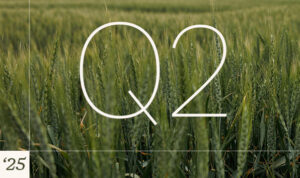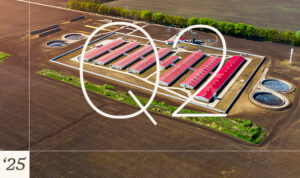Executive Summary
The wine industry has been impacted by the COVID-19 pandemic as well as a very active wildfire season in northern California, with destructive fires burning across Napa, Sonoma, Mendocino and many other counties throughout the state in 2020.
- These large fires broke out during the traditional harvest window, meaning a significant quantity of grapes will be lost due to smoke taint.
- Many wine grape producers will receive indemnity payments.
- The loss in wine grapes has caused a supply shock in the industry, with demand for grapes and bulk wine shifting south to the Central Valley and Central Coast areas.
- Wine sales are lower than in 2019, but direct-to-consumer sales have been encouraging.
- A period of growth in the wine industry has led to greater resiliency and relief valves to help producers through difficult times.
The United States wine industry was facing headwinds in the 2020 growing season even before the COVID-19 pandemic disrupted daily life and wildfires broke out across the state. As operators were preparing to harvest grapes, the LNU Lightning Complex fires began burning through prominent grape-growing regions in California. The fires damaged or destroyed vineyards, burned vines, threatened producers’ homes and led to a very challenging harvest for many.
With much of the North Coast harvest tainted by smoke, demand for bulk wine has shifted south to the Central Valley and Central Coast areas — an ongoing reminder that supply and demand fundamentals drive our markets.
Wine Economics Before the Fires
Through August, wine sales were down about 8 percent from the same period in 2019. Slower sales in the second quarter, which closely align with restrictions on food and entertainment related to the pandemic, are the primary reason for the decline. Sales in the first quarter were stronger than in 2019 and sales in the third quarter remained above recent averages. The slight improvement in the third quarter is likely due to improvements in consumer spending and slightly increased mobility.
Following disruptions to the traditional supply chain, direct-to-consumer wine sales continue to perform well this year. According to Wines and Vines, direct-to-consumer sales through September are up 17 percent over 2019 totals.
Taking a closer look at economic trends, several sources report that sales of boxed wines and ultra-premium wines have been very strong in 2020. The brands that carry an additional measure of consumer recognition have fared better in an environment where consumers are spending less time shopping. On a positive note, the average price of wine purchased by the U.S. consumer has continued a mostly upward trend this year according to the Bureau of Labor Statistics. In August, the average price paid was 2 percent higher than the previous year, most likely indicating some sustained demand for wine.
North Coast Update
Heading into harvest, the wine grape crop in the North Coast of California was already expected to be light due to early frost damage. The outbreak of wildfires in this area has further lightened the crop as many grapes have been lost to smoke taint. Early reports from industry contacts indicate that grapes used for red wines were hit the hardest due to their later harvest window.
Wine industry groups have reported that many grape contracts have already been nullified due to potential smoke taint. The Press Democrat estimated that total wine losses could approach $500 million.
Producers with smoke taint insurance will need to get their grapes tested at an approved lab and make an indemnity claim. Each county and variety has different payment floors and ceilings, so a producer that has a claim and a contract within the payment range should receive a similar indemnity payment, or perhaps a very slight bump if the grapes were contracted below the floor. Conversely, some producers will receive an indemnity payment at the price ceiling which may be below their contracted price.
The example below illustrates that most wine contracts will fall within the floor or ceiling.
American AgCredit has a large wine grape insurance portfolio and has already heard from many customers impacted by the fires. It’s expected that many of our customers will receive indemnity payments from smoke taint issues. For an in-depth explanation of the smoke taint insurance program, please see the Smoke Taint Insurance page which includes a question-and-answer webinar recording with the Sonoma County Wine Growers.
Longer Term Impacts
Looking forward, it’s still too early to know the extent of damage to the wine grape crop and the impact on financial statements. The spot grape market has reportedly improved for those who did not have smoke taint damage. A more accurate understanding of prices will come with the next wave of grape contracting in the spring of 2021.
The light grape crop in the North Coast will also translate to a much smaller vintage from North Coast winemakers. The bulk wine market for prior vintages has already reacted to the light crop, and prices have significantly increased. Some reports indicate significant gains for varieties such as Napa cabernet sauvignon, Sonoma pinot noir, North Coast chardonnay, and the like as wineries look to reconfigure inventory from the expected decline in the 2020 vintage.
Some wineries may also purchase wine grapes and bulk wine from Central Valley and Central Coast regions to support inventory levels, though labeling constraints will apply.
Again, it is still too early to know the extent of physical damage to wineries in the region. However, at the very least the fire damage, pandemic shutdowns and disruptions to the supply chain will also likely lead to some initial slowness in sales and a smaller 2020 vintage. Slower sales may pick up moving into the holiday season, but the loss of total volume from a small 2020 vintage may impact gross revenue in the coming years.
Central Valley
In some ways, the Central Valley is the beneficiary of shifting supply and demand. On the supply side, the 2020 crop was expected to be much smaller than in recent years. Central Valley producers have taken marginal wine grape acres out of production in favor of nut crops, which have recently been more profitable in the area. As such, total bearing acres in 2020 are expected to be much lower than previous years. Bulk wine inventories from the 2019 harvest were still running high to start this year, as many wineries slowed purchases in anticipation of an oversupply in the market.
However, at the onset of the pandemic industry contacts indicated that demand for bulk wine from the Central Valley began to improve as cheaper box wine sales jumped. This increase in demand drove sales and absorbed the higher bulk wine inventories.
Fires in Northern California also pushed wineries to buy 2019 bulk wine and contract 2020 grapes in the Central Valley. The combination of stronger demand and a reduction in supply has helped improve prices in the bulk market and the spot grape market. As an example, prices for bulk wine with the “California” designate increased for the first time since early 2018. The improved prices should benefit most growers in the Central Valley.
Central Coast and Temecula
The Central Coast and Temecula areas have faced several challenges in 2020. Many wineries in this area have relied on events, tasting rooms and dine-in facilities to drive sales. As restrictions on these forms of entertainment push into the fourth quarter of 2020, the financial impact of the COVID-19 pandemic has become more apparent.
The grape market in this area remains slow, with a few decent spot sales. Bulk wine sales have improved somewhat as larger wineries are looking to support inventory levels with the expected reduction in the North Coast vintage.
Putting It Together
The recent outbreak of wildfires dealt another difficult blow to the wine industry, which now must deal with input supply chain disruptions in addition to ongoing output supply chain disruptions. While it’s still too early to know the full extent of damage in Sonoma and Napa counties, the impact is likely to be significant. Many producers will need to rely on crop insurance policies and equity to meet the incoming costs.
At the same time, the invisible hand of the market economy moved to support bulk wine and grape prices in the Central Valley, helping to support cash flow for some Central Valley producers. As the industry moves into the last months of this unusual year, the economic uncertainties are likely to continue. However, the progressive maturation of the industry has led to greater resiliency and relief valves to help producers through these difficult times. For example, 20 years ago disruptions on the same magnitude would have significantly set the industry back even more than is currently projected.
Today, the painful losses due to wildfires and supply chain issues reach an industry with significant capacity and options to move forward.
LEARN MORE
To learn about financial services tailored for your operation, please visit our contact page or call us today at 800.800.4865.
Disclaimer: This material is for informational purposes only and cannot be relied on to replace your own judgment or that of the professionals you work with in assessing the accuracy or relevance of the information to your own operations. Nothing in this material shall constitute a commitment by American AgCredit to lend money or extend credit. This information is provided independent of any lending, other financing or insurance transaction. This material is a compilation of outside sources and the various authors’ opinions. Assumptions have been made for modeling purposes. American AgCredit does not represent that any such assumptions will reflect future events.



